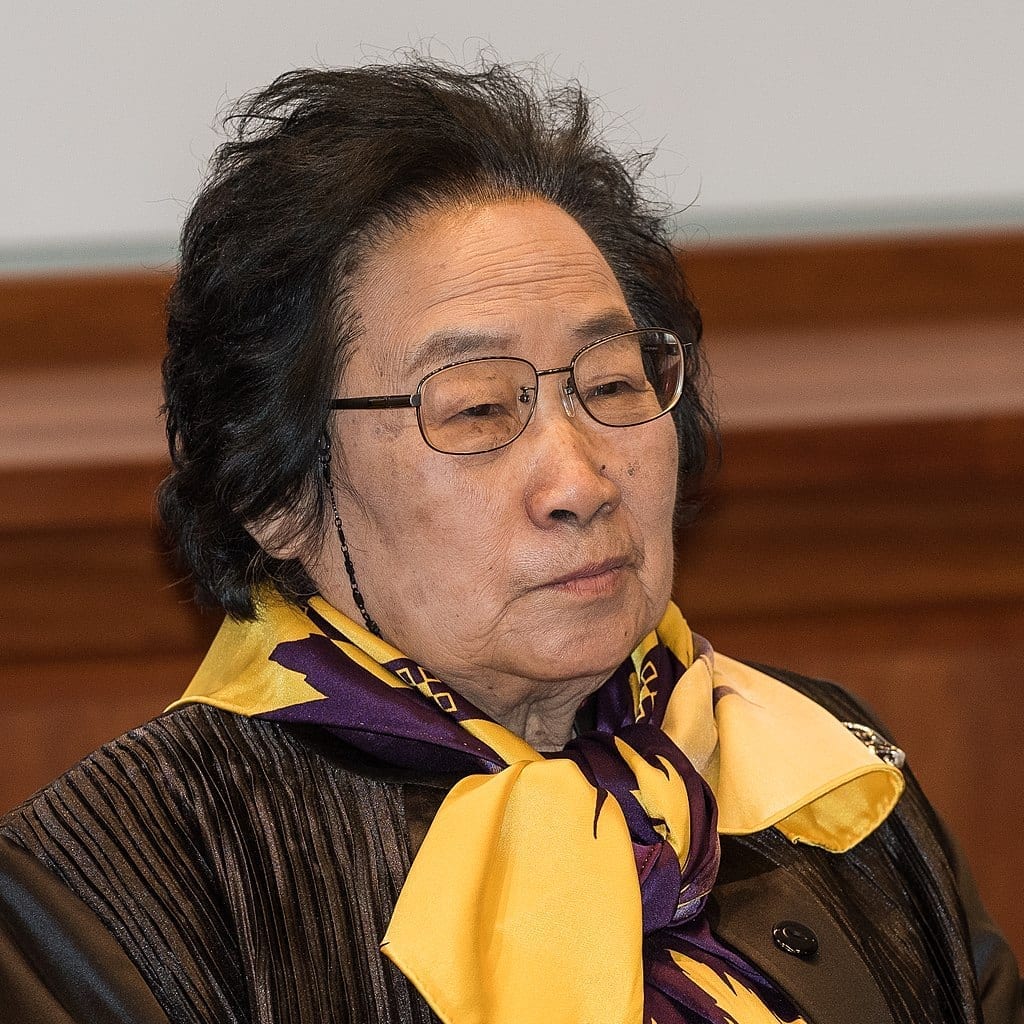 |
|
Tu Youyou, Nobel Laureate in medicine in Stockholm December 2015. Photo by Bengt Nyman. December 6, 2015.
|
The Chinese scientist Tu Youyou received the 2011 Lasker–DeBakey Clinical Medical Research Award and the 2015 Nobel Prize in Physiology or Medicine for isolating a chemical agent to be used in the treatment of resistant malaria. Born in 1930, Tu came from a distinguished family of scholars; studied at the University of Beijing; and early on became interested in traditional Chinese as well as western medicine. She graduated in 1955 and spent two years studying traditional medicine compounds. She then worked as a research scientist, living in a poorly equipped apartment building in Beijing, with only two electrical household appliances: a telephone and a refrigerator to store her herb samples.
In 1967 the Chinese government instituted a massive project to fight malaria in North Vietnam and Southern China, involving more than 500 researchers from sixty military and civilian organizations. Tu, who at thirty-one held only an undergraduate degree in pharmaceutical science, was chosen to lead the program at her institution. Over the years her team tested more than 2,000 herb preparations, at first against malaria-infected red blood cells, and identified at least 640 with possible antimalarial activity. Among these were plants from the large Artemisia genus, which comprises some 200 to 400 species such as the common mugwort, sagebrush, wormwood, and tarragon.
At first the results were not encouraging. Later, some antimalarial activity was found in extracts of Artemisia annua (sagewort), traditionally used in Chinese medicine to treat fever. It was known as qinghao and had been recommended by Ge Hong (AD 384-346) in an ancient text on Emergency Remedies Kept Up One’s Sleeve. But results were inconsistent and not all samples had antimalarial activity. Then Tu understood from the ancient texts that heat was inimical to the extraction of the compound and that it destroyed its activity. She realized that the extraction process had to be done at lower temperatures, and when this was done it became possible to isolate the active ingredient (1971).
Once this was achieved, Tu Youyou felt that as head of her group she had the responsibility to volunteer to first try the drug on herself. It was well tolerated. They called it artemisinin, and its chemical structure was determined in 1975. It had a molecular weight of 282 Da. Later a hydroxyl group was added to the molecule, giving rise to the more clinically effective dihydroartemisinin. In subsequent clinical studies resistance developed quickly if the drug was used alone, leading to the drug and its various molecular modifications being used in combination with other agents to treat malaria. It has been estimated that the drug was administered in over a billion treatments and has had a massive impact in eradicating malaria from disease-endemic countries. Recently artemisinin was tested as a possible ingredient in a cocktail to be used against Covid-19 viral infections.
Tu received the Nobel Prize along with two other scientists, Satoshi Omara of Japan and William C. Campbell of the United States, who discovered ivermectin for treatment of filariasis and river blindness. As Tu had been the leader of a large team of scientists, the Nobel Prize award was not without controversy, but the consensus was that she deserved the major credit for the discovery even though the work had been the effort of many people. She modestly stated that “I think the honor not only belongs to me but also to all Chinese scientists.” There was also discussion whether the award vindicated traditional Chinese medicine or rewarded a scientific method to identify new active drugs. Tu herself regarded her achievement as a gift to humankind from traditional Chinese medicine. The Nobel committee honored her as “an exemplary pharmacognostical scholar who, along with her talented associates, successfully used a vigorous, modern, scientific approach to discover an antimalarial drug that can combat a malignant form of malaria.”
References:
- Ivan Barry Pless, Ray S. Wong, Xiao Quang Ding, and C.B. Lim. in Nobel and Lasker Laureates of Chinese Descent: In Literature and Science, edited by Todd S. Ing, Keith K. Lau, Joseph M. Chan, Hon-Lok Tang, Angela T. Hadsell, and Laurence K .Chan, Chapter 11, page 166 .
- Van Voorhis W.C., van Huijsduijnen R.H., Wells T. N.C. Profile of William C. Campbell, Satoshi Ōmura, and Youyou Tu, 2015 Nobel Laureates in Physiology or Medicine: Nat. Acad Scienc. 2015;112:52, (December 29), p. 15773
- Lucille Liu. Tu Youyou awarded Nobel Prize in Medicine. China Story Yearbook, 2016, ANU Press.
GEORGE DUNEA, MD, Editor-in-Chief

Leave a Reply